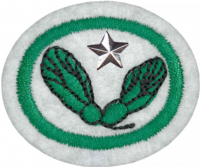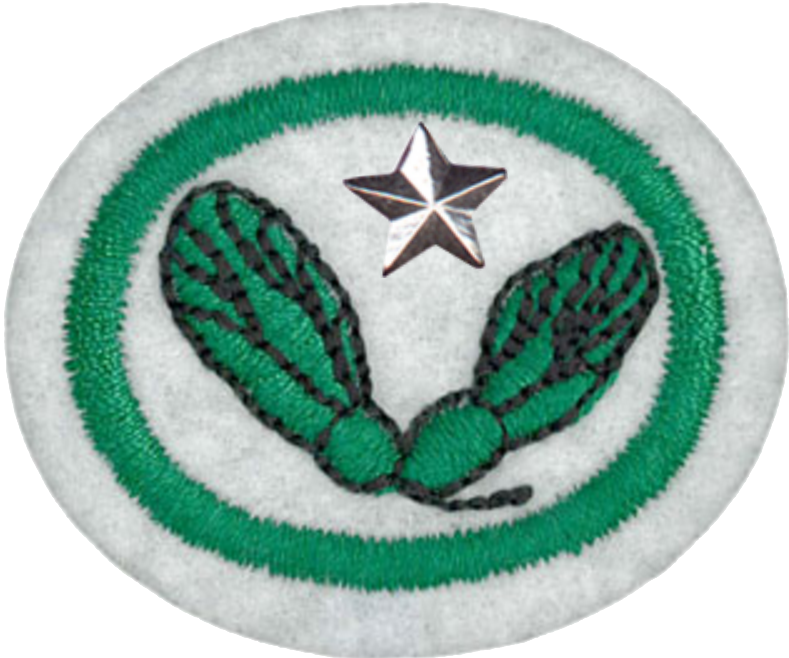Difference between revisions of "AY Honors/Seeds - Advanced/Requirements"
Jomegat bot (talk | contribs) m (Add RequirementsHeader) |
m |
||
| (11 intermediate revisions by 2 users not shown) | |||
| Line 1: | Line 1: | ||
| − | + | {{HonorSubpage}} | |
| + | |||
| + | <section begin=Body /> | ||
| + | |||
| + | <b>1. <section begin=req1 /><noinclude><translate><!--T:1--> | ||
| + | </noinclude>Have the Seeds honor. | ||
| + | <noinclude></translate></noinclude><section end=req1 /></b> | ||
| + | |||
| + | <b>2. <section begin=req2 /><noinclude><translate><!--T:2--> | ||
| + | </noinclude>Identify from drawings and know the purpose of each of the following parts of a seed: endosperm, radicle, plumule, micropyle. | ||
| + | <noinclude></translate></noinclude><section end=req2 /></b> | ||
| + | |||
| + | <b>3. <section begin=req3 /><noinclude><translate><!--T:3--> | ||
| + | </noinclude>Know several differences between a monocotyledon seed and a dicotyledon seed, and give three examples of each. | ||
| + | <noinclude></translate></noinclude><section end=req3 /></b> | ||
| + | |||
| + | <b>4. <section begin=req4 /><noinclude><translate><!--T:4--> | ||
| + | </noinclude>Explain the purpose and use of a "rag doll" seed tester. Use it to test the germination of 100 seeds of a wild plant and 100 seeds of a domestic plant. Report the results of each test. | ||
| + | <noinclude></translate></noinclude><section end=req4 /></b> | ||
| + | |||
| + | <b>5. <section begin=req5 /><noinclude><translate><!--T:5--> | ||
| + | </noinclude>How does a seed differ from a spore? | ||
| + | <noinclude></translate></noinclude><section end=req5 /></b> | ||
| + | |||
| + | <b>6. <section begin=req6 /><noinclude><translate><!--T:6--> | ||
| + | </noinclude>Write or tell orally two spiritual lessons we may learn from seeds. You will find help in Christ's Object Lessons by Ellen G. White, pages 33 to 89. | ||
| + | <noinclude></translate></noinclude><section end=req6 /></b> | ||
| + | |||
| + | <section begin=challenge /> | ||
| + | <b>7. <section begin=req7 /><noinclude><translate><!--T:7--> | ||
| + | </noinclude>Make a collection of 60 different kinds of seeds, of which only 15 may be collected from commercial seed packages, the other 45 you are to collect yourself. Label each kind as follows: seed name, date collected, location collected, and collector’s name. | ||
| + | <noinclude></translate></noinclude><section end=req7 /></b> | ||
| + | <section end=challenge /> | ||
| + | |||
| + | <b>8. <section begin=req8 /><noinclude><translate><!--T:8--> | ||
| + | </noinclude>Have in your collection four kinds of seeds from each of two families of plants, showing the similarity between the seeds of plants in any one family. | ||
| + | <noinclude></translate></noinclude><section end=req8 /></b> | ||
| + | |||
| + | <section end=Body /> | ||
Latest revision as of 12:45, 22 July 2022
1. Have the Seeds honor.
2. Identify from drawings and know the purpose of each of the following parts of a seed: endosperm, radicle, plumule, micropyle.
3. Know several differences between a monocotyledon seed and a dicotyledon seed, and give three examples of each.
4. Explain the purpose and use of a "rag doll" seed tester. Use it to test the germination of 100 seeds of a wild plant and 100 seeds of a domestic plant. Report the results of each test.
5. How does a seed differ from a spore?
6. Write or tell orally two spiritual lessons we may learn from seeds. You will find help in Christ's Object Lessons by Ellen G. White, pages 33 to 89.
7. Make a collection of 60 different kinds of seeds, of which only 15 may be collected from commercial seed packages, the other 45 you are to collect yourself. Label each kind as follows: seed name, date collected, location collected, and collector’s name.
8. Have in your collection four kinds of seeds from each of two families of plants, showing the similarity between the seeds of plants in any one family.


